Grass-fed milk or organic milk? Why not conventional milk? Why grass-fed milk over organic milk? Is grass-fed cow ghee healthy? And the questions just get piled up. Let me clear some of your questions by looking at a few basic differences.
So, what is grass-fed cow’s milk?
Grass-fed milk is the natural milk that is obtained from grass-fed cows. The cows are fed only with grass and forage. They are not given with grain or grain products. They may or may not be given growth hormones or antibiotics.
What is organic milk?
Organic milk is obtained from cows raised according to organic farming methods. The cows are only fed organically grown grass, forage, hay etc. The cows are not given any growth hormones or antibiotics.
Note – Organic milk can also be labelled as organic grass-fed milk if it adheres to the standards of both practices.
Organic cows are happier and healthier which ends up in more nutritious milk and healthier babies and kids! By choosing organic milk, you’ll be able to get the nutritional benefits of milk without exposing your family to chemical contaminants.
What is conventional milk?
Conventional milk is obtained from cows fed with grass, grains, corn, forage and other foods like rice, vegetables or vegetable stock etc. These cows are not conformed to any rules and regulations of farming methods. They may or may not be given with growth hormones or antibiotics.
Thus, by these common differences we come to know that there is a difference in the quality of milk based on the farming methods of cows. The way the cows are fed have a huge impact on the nutrient composition of the milk produced by the cows.
Read our blog – Life cycle of Desi cow
Nutritional benefits of grass-fed cow’s milk
Grass-fed cow’s milk is better because it has various benefits. They are-
- It makes the milk rich in Omega 3 and Omega 6 fatty acids.
- It produces Conjugated Linoleic Acid (CLA) which is a beneficial fatty acid to the heart.
- Good quality of saturated fat.
- Increases the amount of Vitamins like Vit A,B12, D, E.
- Better source of calcium content.
- Intake of grass-fed cow’s milk improves heart health, improves bone and teeth strength.
- Increase the level of fluid in the body and prevents dehydration.
- Milk helps to maintain healthy skin and it is also believed to enhance the glow of the skin. Thus, grass-fed milk has many health benefits and keep the individual healthy and active the whole day.
Now, that we have known the importance of grass-fed cow’s milk lets also have a look at grass-fed cow ghee.
We all are aware that ghee is a dairy product made by milk. It is prepared by simmering butter at a low temperature.
So, what is grass-fed cow ghee?
Grass-fed ghee is the ghee which is obtained from the milk of grass-fed cows. As you know ghee is prepared by simmering the butter at a low temperature. Here the butter is made by the grass-fed cow’s milk.
Read our blog – Homemade ghee (long term butter storage)
History of grass-fed cow ghee
Ghee, referred to as Ghṛita in Sanskrit is butter that originated in ancient India. It’s made by heating white unsalted butter until clear golden liquid boils, as moisture evaporates separating the sugar and protein to sink at the underside. The liquid is strained and stored in a very clean jar.
Mentioned within the Rigveda and the Mahabharata, ghee in India is taken into account as pure and sacred. Also considered auspicious, it symbolises abundance and prosperity. In the past, even the vessel of ghee was touched only after washing hands whether or not you were engaged in the process of cooking.
In Asia, India and Southern Asia were the major countries that used ghee as a basic cooking oil in their kitchens. In India, desi ghee was made from grass-fed cow’s milk as cows are considered the most sacred creatures on earth.
Thus, the grass-fed ghee is also considered sacred, auspicious and pure. It was and even now people use ghee during all the special ceremonies like marriages, festivals and house-warming functions etc to light lamps(diyas) and even in homa-havana.
Ayurveda has been using grass-fed ghee for centuries for their Ayurvedic treatments and diets. Ayurveda states that the use of grass-fed ghee in diet can keep the individual healthy, active and calm. It is also used to cure many ailments according to Ayurvedic practices.
Read our blog – Why opt for A2 Desi Cow ghee?
Use of Grass-fed cow ghee in Ayurvedic treatments and practices
There are a couple of Ayurvedic treatments and practices which use grass-fed cow ghee as the basic component of the treatment.
Nasya karma (treatment)
Nasya karma is an Ayurvedic treatment in which medicated drugs along with grass-fed ghee is administered through the nasal route. Ayurveda states that Nasya karma reduces stress, enhances skin and hair care. It is also said to be a detoxifying therapy. Nasya karma improves the breathin, gives a soothing effect to the eyes and also decreases eyesight problems.
Read our blog – Improve eyesight naturally by 5 conventional kitchen formulas
Shata Dhauta Ghrita
The Shata Dhauta Ghrita (SDG) is an Ayurvedic practice where Ayurvedic ghee is prepared by washing the ghee in water for about 100 times. Ayurveda states that Ayurvedic ghee rejuvenates dermal tissue, promotes healing of skin, reduces skin irritation and skin problems. It also acts as the best natural moisturizer to the skin. Thus, the SDG practice is a treatment to cure many skin ailments like sunburn, acne and skin irritation etc.
Grass-fed ghee during pregnancy
Grass-fed ghee can be used both externally and internally during pregnancy. Incase of bleeding during pregnancy, the woman is recommended to apply the water washed ghee under the umbilicus to stabilize pregnancy. In this process, the ghee is washed with an equal amount of water and is drained out 10-15 times.
According to Ayurveda, nursing mothers should consume grass-fed ghee to help the creation of mammalian organs for production of sufficient amounts of breast milk to the baby for its natural nutrition. Usually, consumption of grass-fed ghee is beneficial for consumption by all ladies for boosting their stamina and strength
For mothers suffering from stretch marks after pregnancy, a remedy to reduce them is by applying a paste of organic grass-fed ghee and turmeric powder in the area of the marks
Adding a teaspoon of ghee to a glass of hot milk with 1-2 drops of saffron and a pinch of turmeric is very beneficial to the pregnant women according to Ayurveda.
Read our blog – Ayurvedic ghee during pregnancy
Netra tarpana
An Ayurvedic eye treatment called Netra Tarpana is a remedy used in which the eyes are bathed in warm ghee. As ghee is a cooling agent, it is used to balance the pitta imbalance or appearance of fatigue eyes. It is said in the Sharangdhara Samhita Uttarakhanda, that ghee strengthens the muscles and nerves of the eyes; it also gives freshness to eyes by improving the circulation of blood in the facial muscles and nerves during the process. It is usually done in pleasant climates.
Ayurvedic massage
Ghee massage is used to treat problems of pitta and vata by the use of organic grass- fed ghee. It is said to promote memory, intelligence, quality and quantity of sexual secretions. It enhances the growth of hair. Improves the skin health and complexion. Even infants, babies are given ghee massage everyday in order to gain weight, development of the brain, better sleep, good blood circulation and maintenance of soft, healthy skin.
To know more about the use of grass-fed ghee in Ayurvedic treatments and practices, click here.
5 ways to add grass-fed cow ghee to your diet
If you are following a ketogenic diet, ghee is keto-friendly on any alternative and can easily be consumed by adding to a variety of healthy recipes. Let’s take a look at five different ways you can add desi ghee to your diet.
#1 Used as your cooking oil: As we know the ghee includes the ideal cooking fat due to the presence of high smoke points. Utilize ghee as your cooking oil.
#2 Use it in soups & stews: Adding ghee to soups and stews is a better way to make an extra creaminess in soups, while also adding some additional nutritional value. Ghee also will add a savory taste to only about anything you add it to.
#3 Use it in place of butter: Try using ghee alternative to regular butter for immense health benefits. You can consume ghee with your morning toast, or use it for making your healthy baking recipes.
#4 Consume ghee with coffee: If you want a supercharge then add it to your morning cup of coffee. Use a teaspoon of ghee to boost body energy and healthy fat to kickstart your day.#5 Use it for making smoothies: If you are thinking of adding healthy fat to your smoothie then consume a teaspoon of ghee as a topping. Adding healthy fat is the best way to promote repletion while helping in controlling blood sugar levels. Including ghee in your recipes is a significant method to verify that you are getting the fat that you need for seeking optimal health.
Grass-Fed Ghee improves stamina and bone power
Ayurvedic experts suggest for grass-fed ghee consumption at a continuous level, which results in improving body’s immunity from various health problems. Grass-fed Ghee is nurturing for the development and maturity of body tissues and engages the sense organs so that they can function better. Ayurveda accepts that grass-fed ghee consumption at recommended portions improves the abilities of the mind like memory, intelligence, and wisdom.
Read our blog – How Desi Cow Ghee helps in everyday problems
Nutritional Benefits of grass-fed ghee
- Grass-fed ghee produces Fat soluble Vitamins like vit A,D,E,K.
- It makes the ghee rich in Omega 3 and 6 fatty acids.
- It produces Conjugated linoleic acid (CLA).
- It produces Butyrate.
- Grass-fed cow ghee is an Immunity booster to the body.
- Consumption of grass-fed cow ghee acts as an Energy booster and keeps the individual energetic and active whole day.
- Grass-fed ghee is a Detoxifying agent and thus is used to cure various ailments.
- Grass-fed ghee has an Anti-inflammatory and Antioxidant property.
Why grass-fed cow ghee over normal ghee?
Grass-fed ghee is better than the rest because, most of the cows are grain-fed which is not healthy when compared to grass-fed cows. They are usually corn or soy fed cows which is much cheaper and also difficult for the cows to digest. Whereas, grass-fed cows can digest grass easily, which makes the milk much healthier.
Where to buy grass-fed cow ghee?
There are a plenty of ghee brands with different nutritional values and price tags which are available in the market. Before you make a choice you should know regarding its process and its importance. Buying the desi cow ghee online with fancy bottles or jars is not just enough. And we always want the best for us as well as our family! So before you make a choice about buying pure ghee online, read this!

Buy cow Ghee Online : Order Now. Free Shipping
Suresh ghee is a premium quality handmade ghee. Neither does it contain any added flavours nor any kind of preservatives. Suresh foods obtains milk from grass-fed cow’s milk. It has great aroma and an amazing flavour with high nutritional values. We undergo the vedic process to prepare the best desi ghee. The vedic process of preparing ghee is lengthy and time consuming as well. Before you blindly trust any ghee product, know why we are DIFFERENT from the others. You can buy desi cow ghee online at our online store. Visit our website https://sureshfoods.com/. 1 kg ghee price is Rs. 2390 at our store which is available all over India.
Why Suresh ghee is different from others?
- We use milk from the Sahiwal breed cow.
- We practice grass-fed farming practices for our cows.
- We believe in Happy cows and do not torture them for getting milk.
- We follow the traditional Bilona churn method while preparing ghee.(We don’t use any processed butter to prepare ghee).
- We do not use any other cow’s milk rather than our farm cow’s milk.
- We do not inject any sort of Bovine growth hormones to our cows.
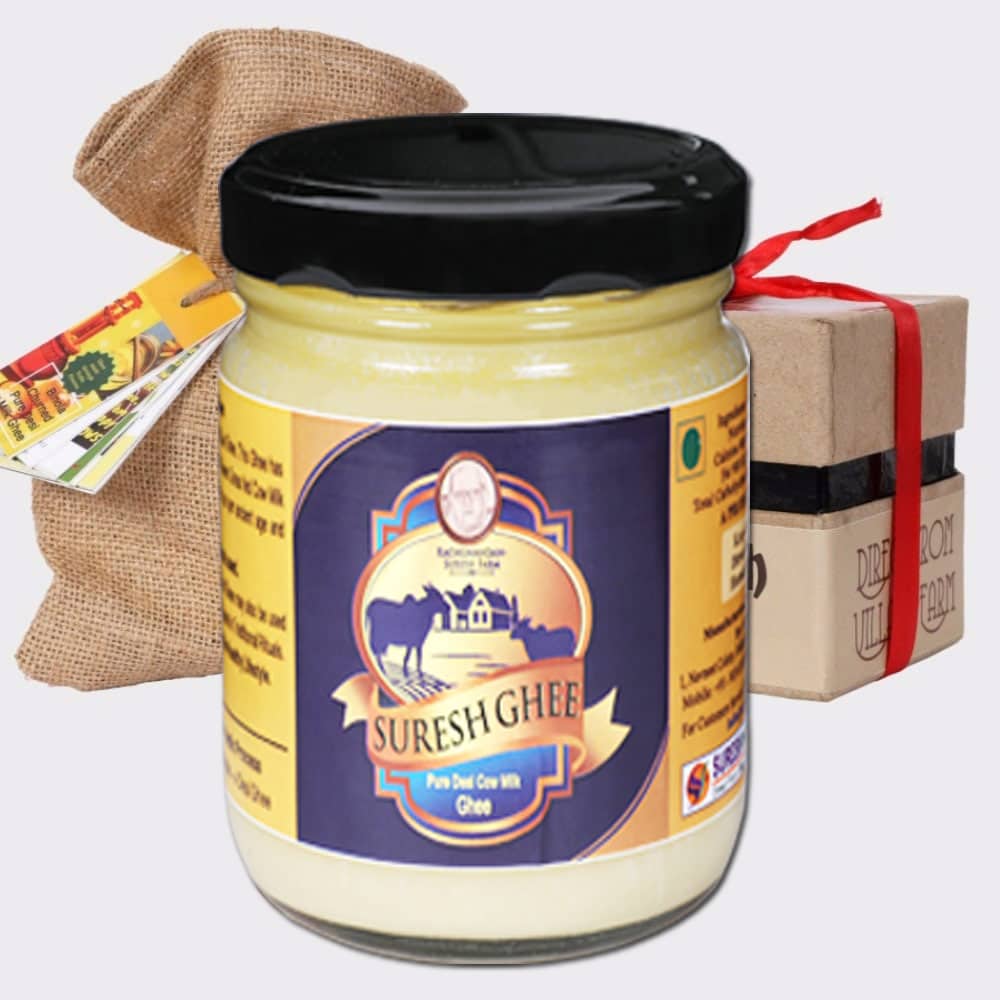
To know more about Suresh foods, visit our website https://sureshfoods.com/. You can place your order for grass-fed cow ghee, click here. You can also get ghee subscription at Suresh Ghee. You get a couple of benefits from our Suresh Ghee Subscription. Get 10-20% discount and save money, the ghee will be automatically dispatched to your address every month without any order process. Hurry up! And order your fresh handmade grass-fed cow ghee today.
Comparing the Benefits of Milk and Ghee:
Is ghee more beneficial than milk?
The fat consistency in milk varies depending on the source, either it could be cow or buffalo. In contrast, ghee is plentiful in fat-soluble vitamins A, D, E, and K. Ghee, specifically when produced utilizing the bilona method and desi cow milk, is regarded as healthier as it preserves the essential nutrients.
What are the effects of Daily Consumption of Cow Ghee ?
Despite its high fat consistency, routine consumption of cow ghee delivers lesser-known benefits. Rich source of Omega-3 fatty acids, ghee is connected with encouraging cardiovascular health. Studies recommended that individuals implementing a spoonful of ghee into their routine diet experience minimized serum cholesterol levels and a minimal incidence of coronary artery disease.
Does affects adversely on Cholesterol?
Even though ghee is fatty, it consists of high concentrations of monounsaturated Omega-3s, aiding the heart and cardiovascular health. Research demonstrates that involving ghee in a balanced diet can add towards minimizing unhealthy cholesterol levels, as the creation process includes removing milk solids.
What benefits are gained by combining ghee with milk?
The mixture of ghee and milk emerges to be a potent wellness drink with several health benefits. Milk delivers iron, protein, calcium, magnesium, phosphorus, potassium, as well as vitamins A, D, B-6, E, and K. Ghee being rich in fat-soluble vitamins and good fats, improves the nutritional profile. Such combination is specifically beneficial when ghee is produced utilizing the bilona method and desi cow milk, assuring nutrient integrity.

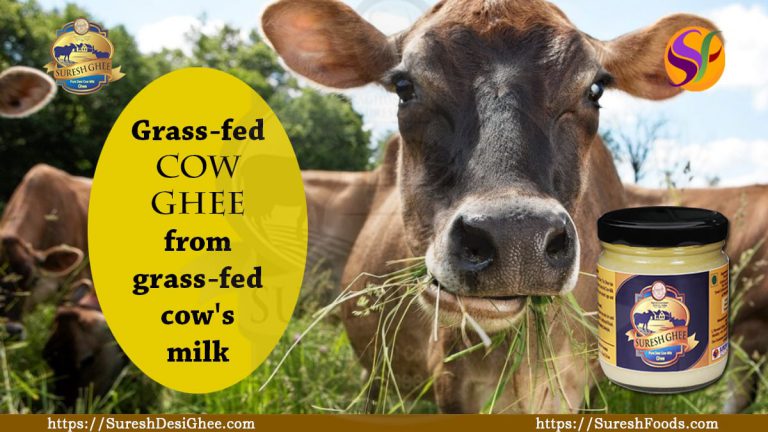


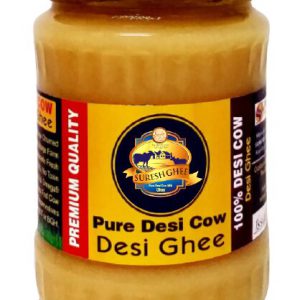
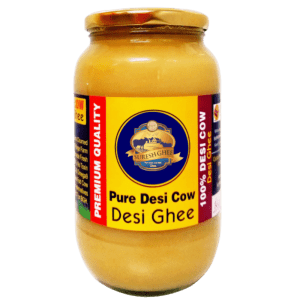
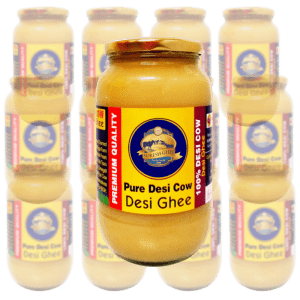
 WhatsApp us
WhatsApp us
Naveen m...